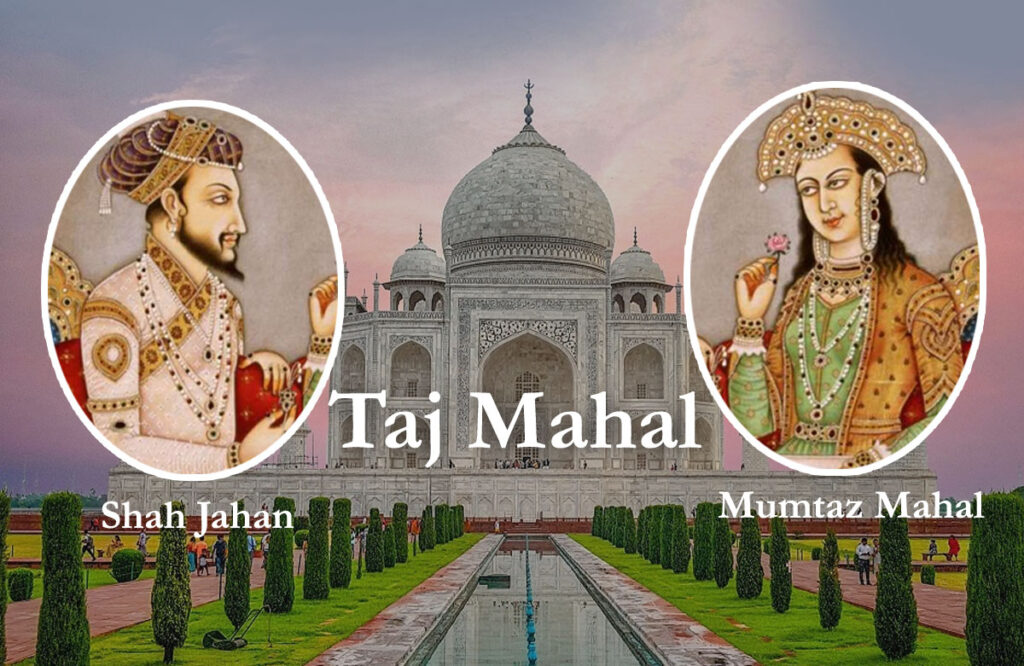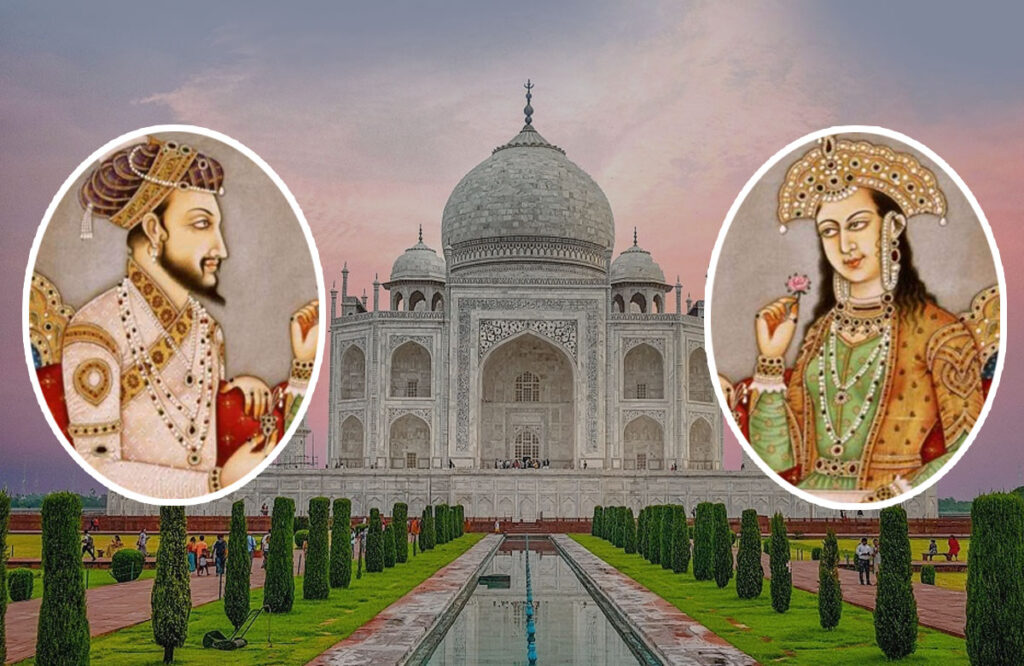In the heart of Agra, India, there exists a monument that transcends time and tells a tale of love so profound that it has captured the hearts and imaginations of people for centuries—the awe-inspiring Taj Mahal. This architectural wonder, born out of the deep grief of Emperor Shah Jahan, narrates a story that resonates through the ages—the story of Shah Jahan and Mumtaz Mahal, a love that knew no bounds.
The Taj Mahal stands as an architectural masterpiece and a testament to the enduring power of love. Shah Jahan’s grand gesture, born out of grief, has created a legacy that stretches far beyond the borders of time and geography. As visitors stand before the ivory-white marvel, they are not just witnessing a monument; they are experiencing a timeless tale of love, loss, and the undying spirit of human emotion.
The Mughal Romance Unfolds
Shah Jahan, born in 1592, was the fifth ruler of the illustrious Mughal dynasty. From a young age, he displayed a profound appreciation for art, literature, and architecture. In 1607, his fate was intertwined with that of Arjumand Banu Begum, known as Mumtaz Mahal. Mumtaz, born in 1593, was a Persian princess and a niece of Empress Nur Jahan, the esteemed consort of Emperor Jahangir.
Love Blossoms
The young prince and the captivating princess fell deeply in love. However, it wasn’t until 1612, when Shah Jahan became the heir apparent, that their union became a reality. Mumtaz Mahal became his inseparable companion, sharing his passions for the arts and poetry.
The Devotion
Mumtaz was not just a queen; she was Shah Jahan’s confidante and advisor. Her influence on the affairs of the state was profound, and her compassion for the people earned her admiration. Shah Jahan, deeply devoted to Mumtaz, sought her counsel on matters of governance, and her presence brought solace to his turbulent life.
The Tragic Turn
In 1631, tragedy struck when Mumtaz Mahal passed away during childbirth, leaving Shah Jahan utterly shattered. The grief-stricken emperor, in his profound love and sorrow, vowed to immortalize Mumtaz through a monument that would surpass the grandeur of any the world had seen.
The Birth of Taj Mahal
The construction of the Taj Mahal commenced in 1632, a monumental undertaking that would span over two decades. The emperor enlisted the most skilled artisans, architects, and craftsmen of the time to bring his vision to life. The white marble for the monument was sourced from Makrana in Rajasthan, and the construction incorporated elements of Persian, Ottoman, Indian, and Islamic architecture.
Symbol of Eternal Love

Completed in 1653, the Taj Mahal stood as an unparalleled symbol of Shah Jahan’s enduring love for Mumtaz. Its intricate inlay work, calligraphy, and geometric patterns adorned with semi-precious stones echoed the emperor’s devotion. The central dome, flanked by four minarets, created a harmonious and symmetrical masterpiece.
The Legacy Lives On:
Shah Jahan’s Fate
Shah Jahan’s unwavering love for Mumtaz had a bittersweet consequence. His excessive indulgence in grief and the colossal expenditures on the Taj Mahal strained the empire’s resources. In 1658, his son Aurangzeb, driven by political ambition, dethroned Shah Jahan and imprisoned him in the Agra Fort. From his confined quarters, Shah Jahan could gaze upon the Taj Mahal, a painful reminder of his lost love.
Symbol of Indian Heritage
Despite the changing tides of history, the Taj Mahal endured as a symbol of India’s rich cultural heritage. Its architectural brilliance and poignant love story attracted admirers from around the world.
UNESCO World Heritage Site
In 1983, the Taj Mahal earned the prestigious title of a UNESCO World Heritage Site, recognizing its cultural and historical significance. It remains a living testament to the artistic achievements of the Mughal era.
Enduring Popularity
Today, the Taj Mahal stands as one of the Seven Wonders of the World, drawing millions of visitors annually. Its allure extends beyond architecture; it embodies the universal theme of love, loss, and the enduring legacy of a romantic saga.
The Taj Mahal Experience
Architectural Grandeur
Visitors to the Taj Mahal are captivated by its sheer grandeur. The play of light on the marble surfaces creates an ever-changing spectacle, enchanting spectators from dawn to dusk.
Romantic Symbol
Couples from around the globe visit the Taj Mahal, viewing it not just as a historical monument but as a symbol of eternal love. The sight of the monument, often bathed in the soft glow of moonlight, enhances its romantic mystique.
Conservation Efforts
Preserving the Taj Mahal has been a continuous endeavor. Conservation efforts, including cleaning, restoration, and restrictions on pollution in the vicinity, aim to safeguard this architectural gem for future generations.
Please feel free to contact us at any time for any other travel information, tour bookings, tickets, transportation, or hotel bookings in India. Just call or WhatsApp us at +91 98370 44720. You can also visit our official website: www.tajmahaltourguide.com

